Paris has long inspired artists — painters, writers and, above all, poets. Nobody who loves beauty as much as words can fail to wax lyrical about the City of Light. Read on for a poetic Parisian tour — and to find the ideal locations for swooning over your favourite poèmes.
Charles Baudelaire & Île Saint-Louis
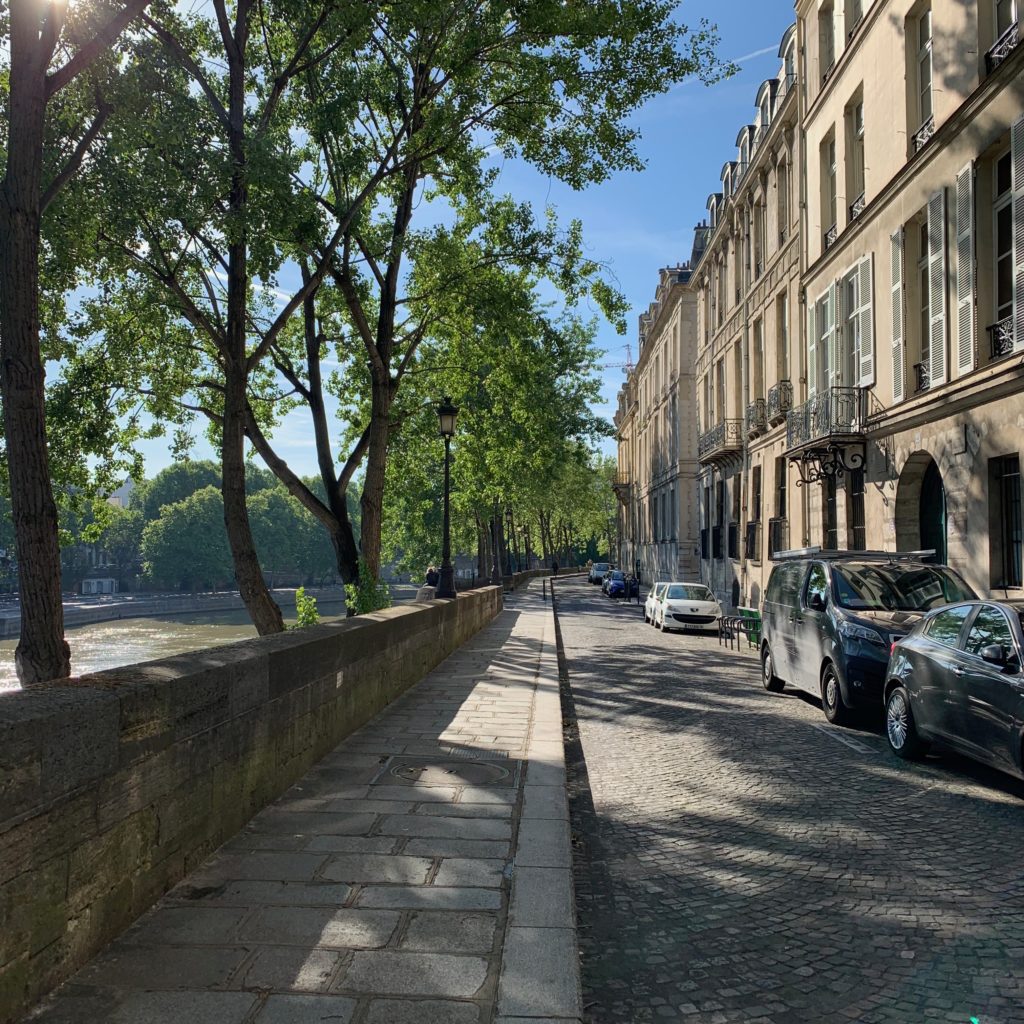
Baudelaire had a fascination for the dark side of things from an early age, which prompted his conservative stepfather to bundle his fast-living beau-fils off on a voyage to India. The budding poet, however, jumped ship in Mauritius and, after also spending some time in Réunion, returned to France even more determined to live his best, most decadent life, especially now that he had come into a sizeable inheritance. Baudelaire moved to Île Saint-Louis, where he eventually settled into the ornate Hôtel de Lauzun (17 Quai d’Anjou; pictured below), the headquarters of the so-called Club des Hachichins (Club of the Hashish Eaters). Here, the literati of Paris lounged around under ceilings painted in scenes of feminine and floral fantasia, nibbling on their green snacks before settling in for a night of hallucinatory entertainment.

No doubt these evenings provided valuable inspiration for the more florid of Baudelaire’s poems; he was beginning to write the works that would make up his 1857 controversial masterpiece, Les Fleurs du Mal. One of the most celebrated poems is the lush L’Invitation au Voyage, where he begs his love to run away with him to a dream land, with the swoon-worthy lines, ‘Là, tout n’est qu’ordre et beauté, Luxe, calme et volupté.’ (No English translation does them justice.) You can just imagine the poet penning these words in his red-and-black-walled room at the Hôtel de Lauzun; he apparently had the lower panes of his top-floor apartment’s windows frosted out, so that all he could see was sky, as though he was back on his own voyage to exotica.
The Hôtel de Lauzun occasionally opens for private tours (easily found with a Google search); walking around the tranquil island of Île Saint-Louis will also connect you to the spirit of Baudelaire, who was a passionate flâneur and lover of Paris’s historic streets. Make sure to stop at 22 Quai de Béthune; Baudelaire also lived here for a while.
Victor Hugo & Place des Vosges
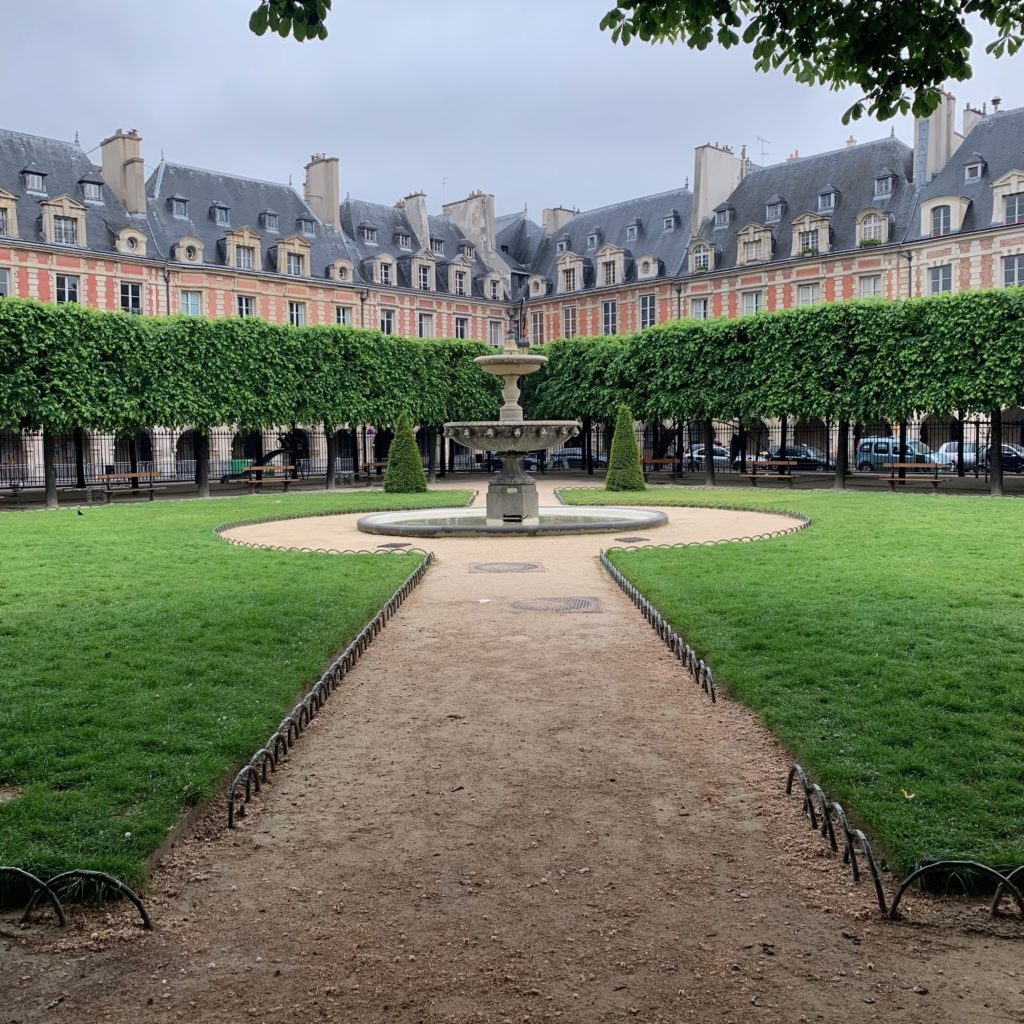
Place des Vosges was more a plaza than a park when Victor Hugo moved into the townhouse at no.6, but it’s nevertheless a perfect place in which to while away some literary time.
In the 1830s, Hugo was famous for his historical novel The Hunchback of Notre-Dame. He also began, at his Place des Vosges home, to write his other blockbuster Les Misérables, after seeing the revolutions of the ‘30s play out on his doorstep.
But Hugo, of course, also wrote some gorgeous poetry. One of the most beautiful, if gut-wrenching, is Demain dès l’Aube, written in 1847, four years after his beloved daughter’s death. It’s endlessly lovely to read, with its evocative walk through Normandy, and its rhyming alexandrines, but the final line never fails to pierce the heart.
After inhaling Hugo’s words in the garden of the Place des Vosges (along with some macarons from neighbouring Carette, of course), head over to the poet’s old digs, now the Maison de Victor Hugo.

To visit is to understand the drama of Hugo’s inner world, to appreciate his Romantic tastes, with the mix of Gothic glamour and Chinoiserie exotica, the clash of Flemish tapestries and Turkish rugs. The flamboyantly homely details, such as walls of porcelain plates and red damask will have you seeing the man behind the legend. The four-poster bed — in ornate Louis XIII Renaissance style — in which he died has the awe-inspiring power of a shrine; it was the place from which the author left this world with fittingly Romantic flair, his last words being “I see the black light.”
André Breton & Place Dauphine
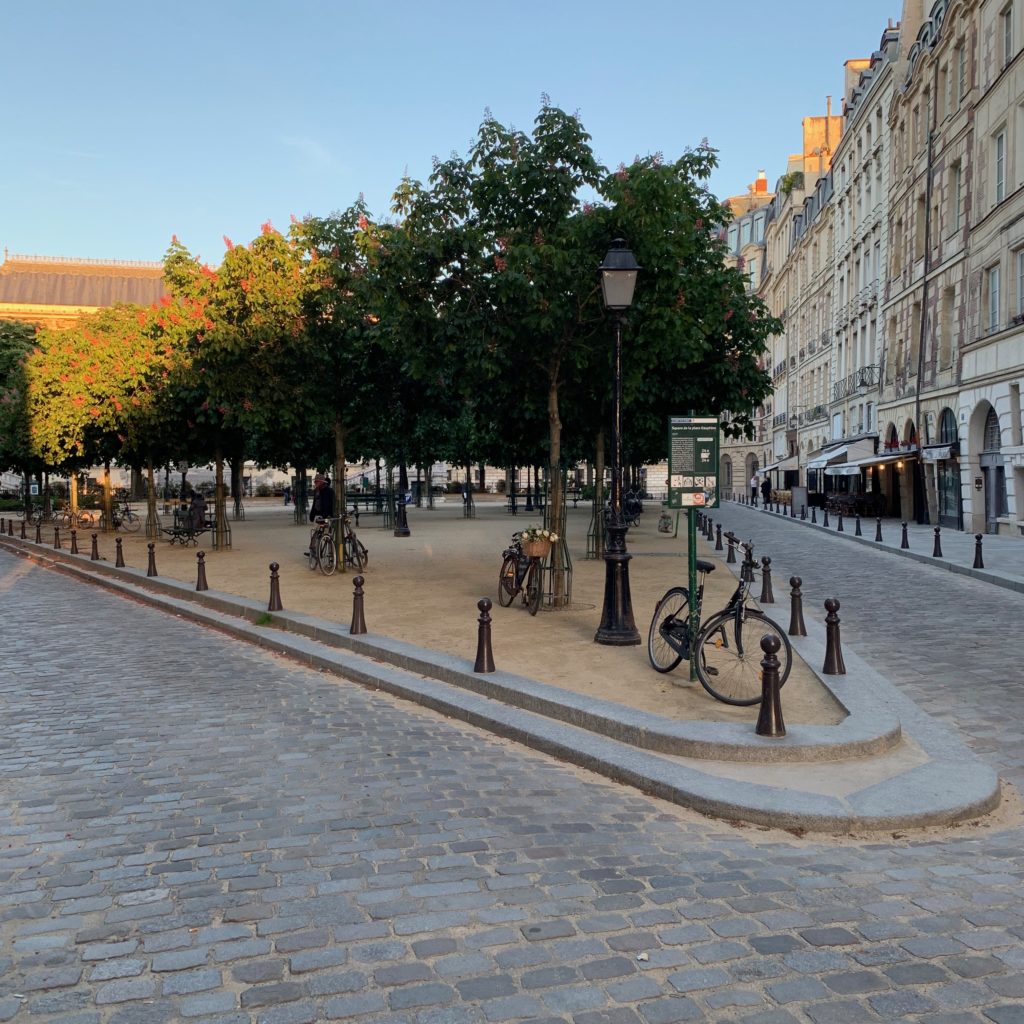
Place Dauphine is a particularly poetic place to linger, especially at twilight when it seems to capture the celebrated blue light of Paris, that time of day when shapes shift, and anything seems possible, even time travel. So it’s a fitting spot in which to appreciate the work of Surrealist poet and writer André Breton. Ideally as you dine at number 15 — Restaurant Paul — as André did in Nadja. His 1928 novel imbued Place Dauphine with a sense of mystery, not to mention seductiveness — Breton called the ‘square’ the ‘pubic triangle of Paris.’
Jean Cocteau & Palais-Royal
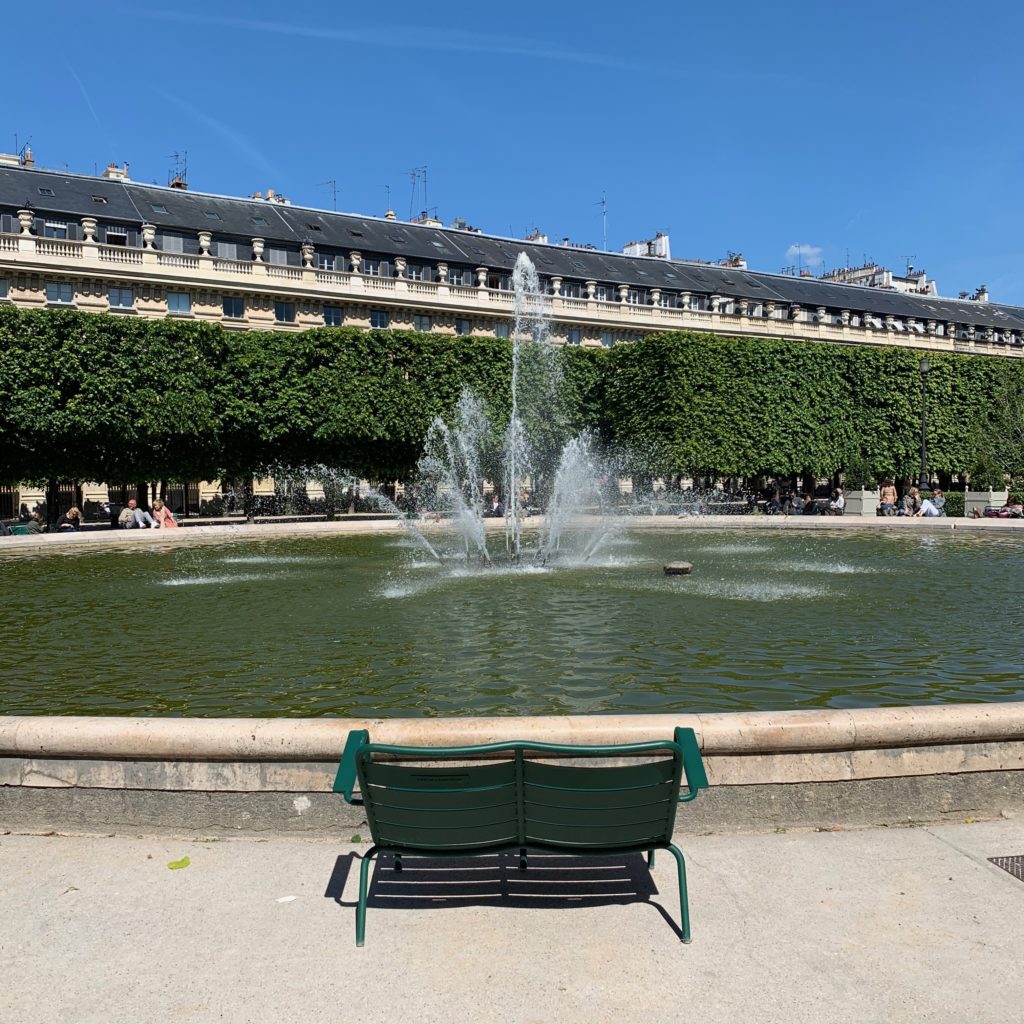
Poetry was but one talent of this prolific, genius, complex figure, one of the leading French creatives of the twentieth century. After publishing his first collection of poems in 1909, at the age of nineteen, Cocteau fell into the avant-garde scene of pre-war Paris, mixing with the likes of Marcel Proust and André Gide. His multi-talent was soon recognised; Sergei Diaghilev of the Ballets Russes asked Cocteau to create a scenario for a ballet, challenging the young man to étonne-moi (‘surprise me’). The result was 1917’s Parade. Cocteau went on to étonner everyone he met, writing plays and novels, producing numerous artworks, and directing films (most famously La Belle et La Bête in 1946), as well as continuing to turn out reams of poetry, his first love. Although to Cocteau, all his creations were a form of poetry.
Whether you read Cocteau’s poems, novels or scripts, or even a biography of his eventful life, do so from a green slatted chair in the Palais Royal, where Cocteau moved in 1939, and lived for most of the rest of his life, a neighbour to his dear friend Colette, the famous author. He once described the Palais Royal as a ‘little town walled in by ancient and decayed buildings.’ Spending time in the enclosed gardens, to this day, still takes you back in time, to a quieter, more mysterious Paris, one that so inspired artists like Cocteau.
Rainer Maria Rilke & Jardin du Luxembourg

The Austrian poet and novelist Rainer Maria Rilke visited Paris in 1902, and was so entranced by the city that he made it his base for the next twelve years. Rilke was inspired by the Modernists, and also the sculptures of Auguste Rodin, whose method of detailed observation influenced Rilke’s shift to a more lyrical style of poetry.
One of his most beloved poems from this period is Das Karussell, an ode to the ancient carrousel of the Jardin du Luxembourg. The merry-go-round, with its painted menagerie whirling beneath a shaded canopy, is the oldest in Paris, dating from 1879. But in a way it spins back further in time because it offers the game of jeu de bagues, where children on the outer circle of animals hold small wooden spears and attempt to catch rings with each turn — an echo of the tilting-at-the-ring knight game of the seventeenth century.
Sitting by the carrousel, listening to the laughter of children, seems the ultimate place to swoon over Rilke’s nostalgic poetry.
Anna de Noailles & Musée Carnavalet
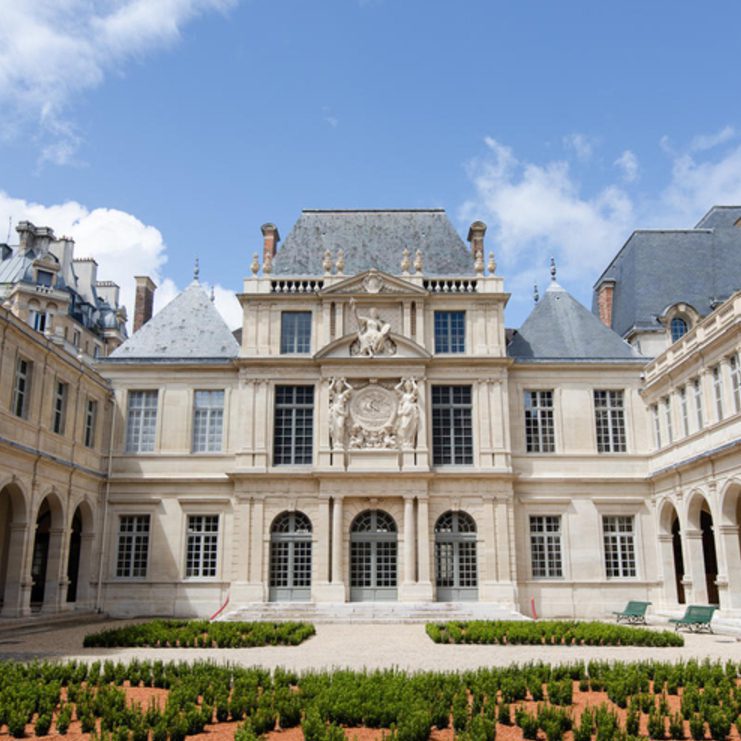
Born into an arty, aesthetically minded family, Anna de Brancovan grew up with a deep appreciation of beauty. As Anna de Noailles — having married into one of the most prominent families of French nobility — her life became all the more stimulating. She published her first poems in 1901, with more (plus novels) to follow. Her glamorous friends included Colette, Marcel Proust and Jean Cocteau.
From 1911, suffering health problems, she wrote and entertained in her bedroom. Her later poems dwelt on the theme of mortality, but her early works were alive with sensuality, lyrical about love and nature, inspired by nineteenth-century Romantic poets. One of her most cherished lines is Il n’est rien de réel que le rêve et l’amour. (Nothing is real but dreams and love.)
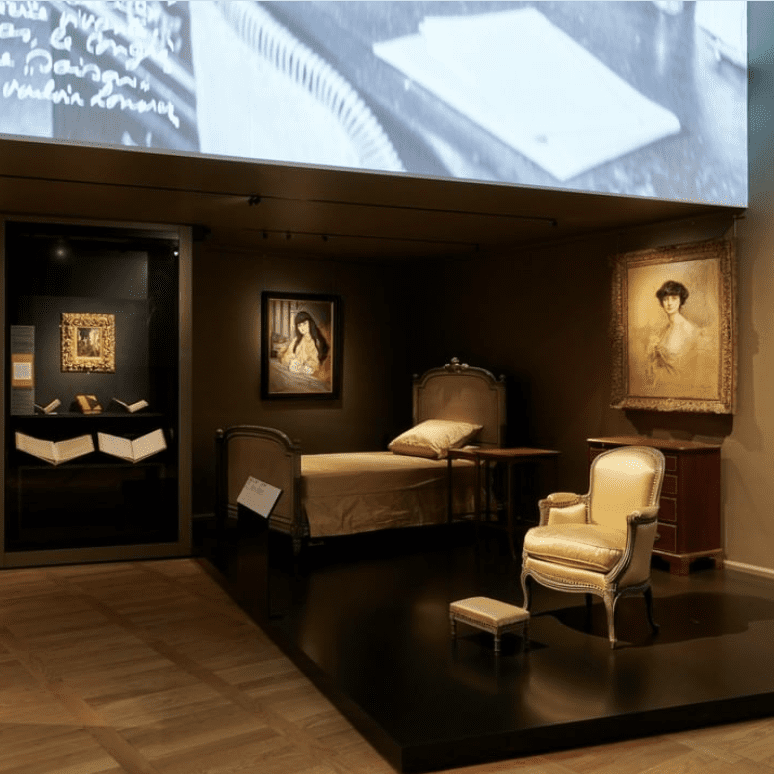
Read her work while sitting in one of the beautiful courtyards of the Musée Carnavalet, after visiting the reconstruction here of Noailles’ famous bedroom.
Jacques Prévert & Café de Flore
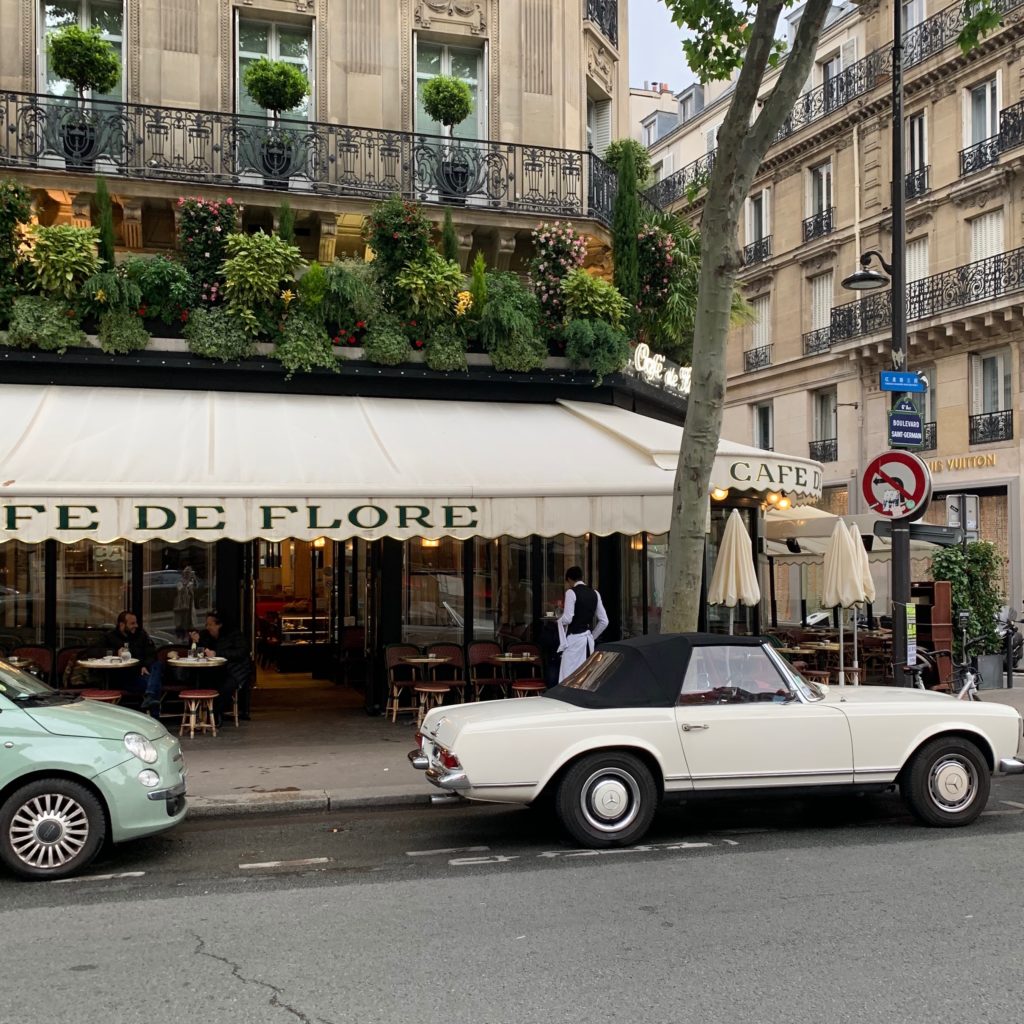
Every student of French knows by heart the lines:
Il a mis le café
Dans la tasse
Il a mis le lait
Dans la tasse de café
Il a mis le sucre
Dans le café au lait
Etc … So ingrained are the words that you can’t help recalling Jacques Prévert’s Déjeuner du Matin as you stir and sip your coffee on a Parisian café terrace — just hopefully without the side-serve of despair.
A perfect place in which to appreciate Prévert is Café de Flore, where the poet himself used to hang in the 1940s, along with the likes of Simone de Beauvoir, Jean-Paul Sartre and Juliette Gréco, who turned some of Prévert’s sentimental poems into luscious songs, most famously Les Feuilles Mortes.
Guillaume Apollinaire & Pont Mirabeau
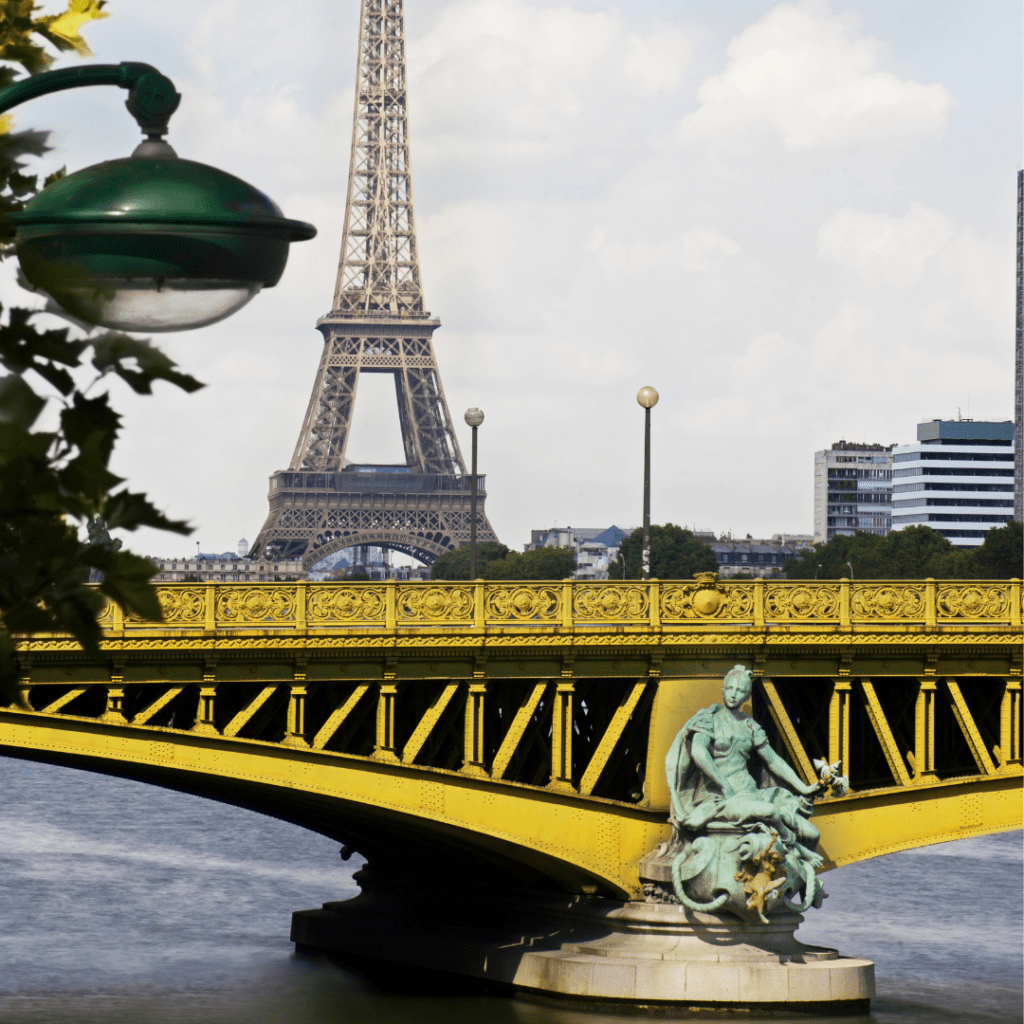
Another poem that students of French know well is Apollinaire’s Le Pont Mirabeau. With the poignant lines ‘Under the Pont Mirabeau flows the Seine, And our loves, I must recall, Joy always comes after pain …’ it’s a poem that especially speaks to all emotion-roiled, heart-broken teenagers.
Paris’s first steel bridge, with its yellow-green latticework, might seem an unlikely source of poetic inspiration, but it was here that Apollinaire used to rendez-vous with his girlfriend, the artist Marie Laurencin, she of the dreamy muted-pastel paintings. He wrote Le Pont Mirabeau to help heal his heart after the couple’s breakup.
If you don’t have time to trek all the way to the actual bridge, admire it from the western tip of the Île aux Cygnes, an island offering up a beautiful botanical promenade that culminates in a grove of willows by a small-scale replica of the Statue of Liberty.
Pierre de Ronsard & Jardin des Plantes
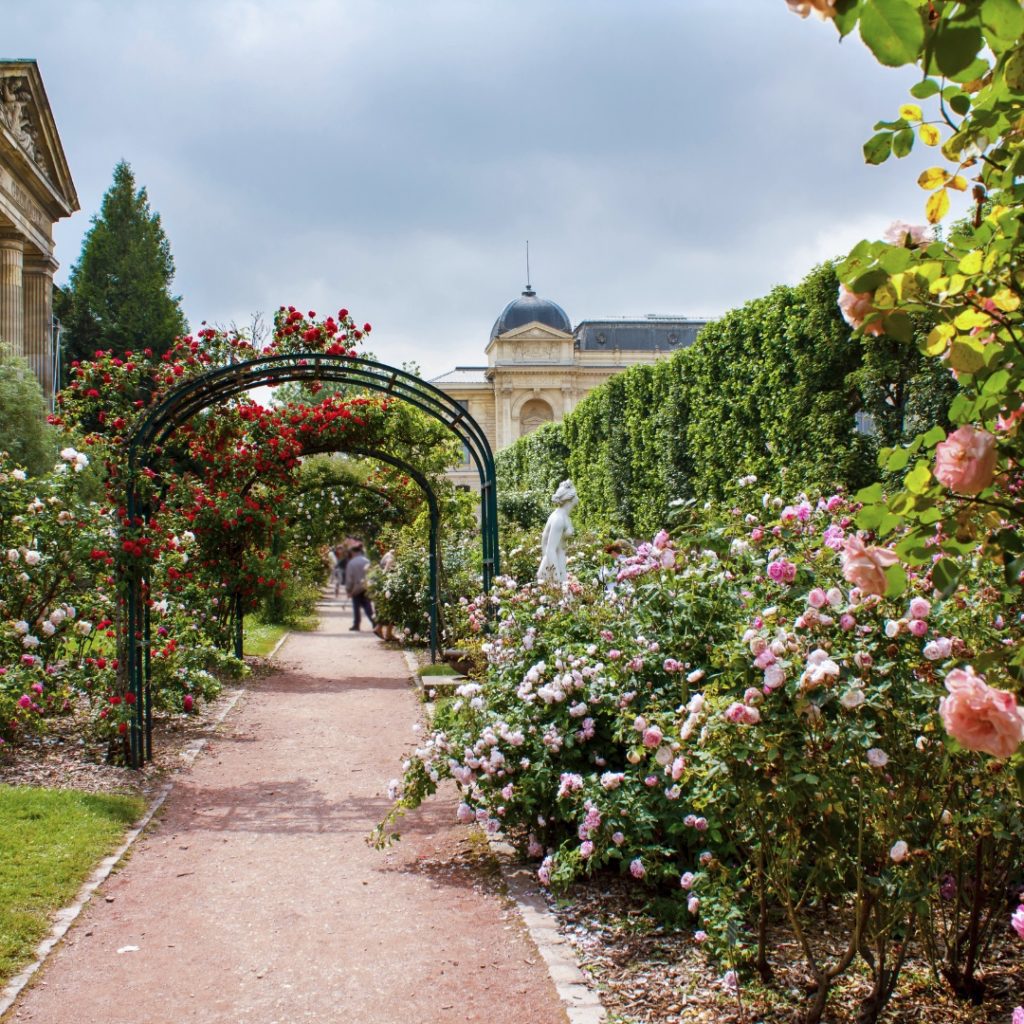
Ronsard was the leading French Renaissance poet, a master of the sonnet. One of his most famous, Quand Vous Serez Bien Vieille, where the poet tries to seduce his subject by evoking the regrets of time’s passing, contains the famous lines that have become a kind of French carpe diem-style call to arms: Cueillez dès aujourd’hui les roses de la vie (Gather the roses of life today).
Ronsard also used the symbol of this flower in his Mignonne, Allons Voir si la Rose, where he similarly attempts to convince his beloved to make the most of her youth and beauty.
Cynical seduction ploys aside, Ronsard’s poems are delightful to read among the literal roses, such as those of the flowering walkway — allée des roses — of the Jardin des Plantes.
Arthur Rimbaud & Rue Férou
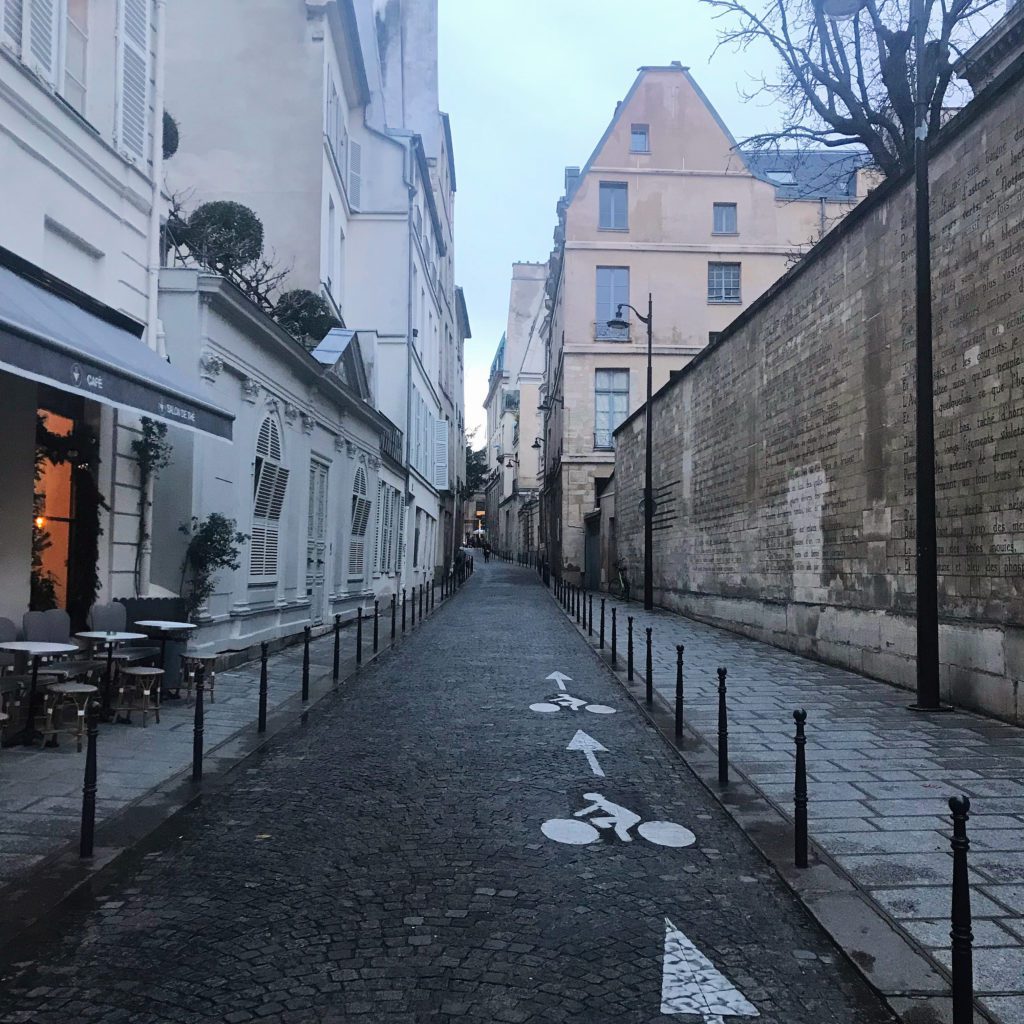
Some say Paris’s streets are cobbled poetry, that its walls are stories written in stone. That’s especially true of Rue Férou, a narrow, whimsical strip that links the Jardin du Luxembourg with the Église Saint-Suplice, because along one wall — bordering a tax office, of all unpoetic things — are the one hundred lines of Le Bateau Ivre (The Drunken Boat), the revolutionary 1871 poem of wild-child prodigy Arthur Rimbaud, who prefigured Surrealism and Symbolism. To read them is to shake your head in wonder at the precocious genius of Rimbaud, who wrote these words (which seduced fellow poet Paul Verlaine, leading him astray) at the age of sixteen. Apparently Rimbaud wrote The Drunken Boat at a nearby café — you might well need to sit down at one afterwards, and mull over the mind-bending poem over a glass (or two) of wine.

